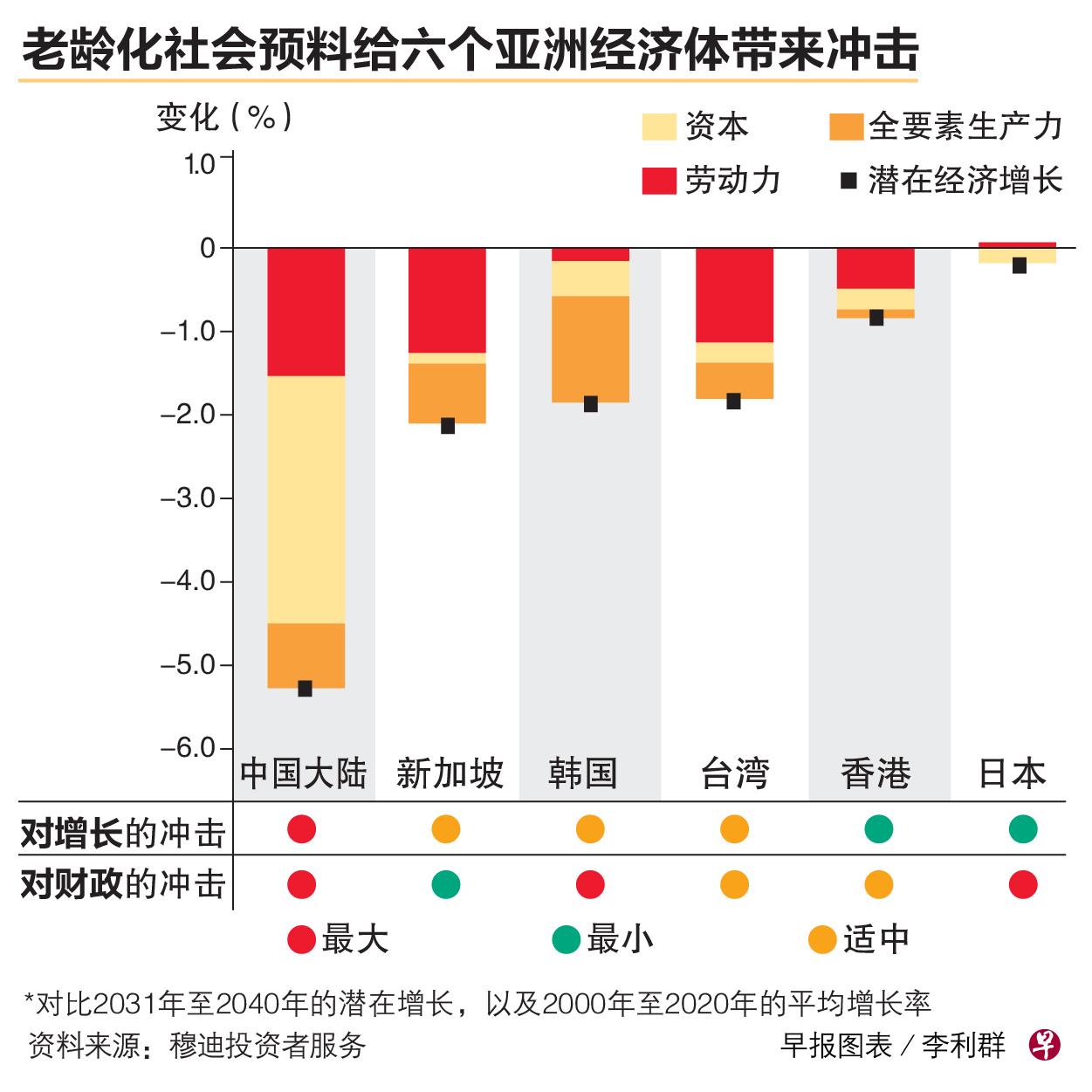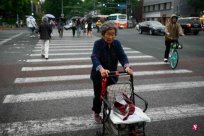
The slowdown in population aging and growth in productivity will have an impact on the Asian economy. The economy of mainland China is expected to face the biggest impact, and then it is Singapore and South Korea.
According to a report published by the six Asian economies of China, Hong Kong, Japan, South Korea, Singapore, and Taiwan, a report published by
The phenomenon of rapid aging population has a sharp decline in the population of working age.
Thereport pointed out that population growth and productivity income have risen rapidly, which has promoted the strong expansion of these six economies in the past.However, the phenomenon of aging will inhibit the growth potential of these markets in the next decades.
If the growth potential of these economies from 2031 to 2040, and their average growth rate from 2001 to 2020, the total domestic product (GDP) of mainland China has fallen the largest, down more than 5 %EssenceThe second largest decline is Singapore, and GDP may fall by about 2 %.South Korea ranks third.

For this report, Moody's Vice President and senior credit personnel Anushka Shah said: "The total population of these six economies accounts for one -fifth of the global population, and their population aging is agingIt will drag economic growth and public finance. "
The aging population may also have a impact on global inflation and interest rate trend, because retirees have higher expenses or reduced national savings, thereby pushing high interest rates.However, the other possibility is the decline in economic growth, leading to a decline in interest rates and inflation.
From the perspective of aging -related expenses accounted for the total domestic product, Singapore's proportion is the lowest among the six economies, and it may not rise to about 5 % until around 2035, surpassing Taiwan.Japan's aging -related expenses accounted for the ratio of GDP, and it has been far beyond the other five economies, and it is expected to exceed 22 % by 2040.
The aging of the population will push up the expenses of individual economies in medical and social services, bringing pressure on government finance.Japan, South Korea, and China are most significant.
Singapore in 2030s in 2030 is at least 65 years old
Singapore, in 2030, one of Singapore is 65 years old or more, and the government's increase in medical expenses will reach 0.8 % of the GDP.
However, the report believes that the impact of population aging to Singapore's finance is not expected.This is because the purpose of Singapore's medical system is to avoid people from excessive dependence on the country.The government combines plans, employer medical benefits such as allowances, Medisave, and MEDISHIELDLIFE, as well as allowing patients to pay for aging expenses from various aspects.
TheReport also expects that Singapore's debt ratio is the lowest of the six economies, because the Singapore government will ensure a financial balance in the long run by increasing national income measures.One of the measures is to increase the consumption tax twice this year and next year, raising the consumption tax from the previous 7 % to 9 %.
Thereport pointed out that government policies play an important role in responding to the impact of population aging. This is why governments in various localities are actively to reduce impact through improving productivity, labor team participation rates and encouraging fertility measures.
In addition, as people's expectations increase, local governments are considering raising the retirement age or reforming the pension system. However, in the face of social pressure and political considerations, this process will be hindered.
From July 1, 2022, Singapore's legal retirement age has increased from 62 to 63, and the re -employment age can be adjusted from the highest to 67 to 68.
Artificial intelligence replaces human technology to alleviate aging problems
On the other hand, adopting technology helps to overcome the challenges brought by population aging.For example, robots, remote work platforms, and technology that strengthens skills can help the elderly to improve productivity.
In recent years, Singapore has used artificial intelligence to replace manpower in recent years.In the world's maximum industrial robotics rankings, Singapore ranked second.According to data from the International Robotics Federation, in 2020, Singapore's manufacturing industry uses 605 robots per 10,000 employees, far exceeding the average level of 126 robots per 10,000 employees worldwide.South Korea tops the top of the list, with 932 robots per 10,000 employees.




